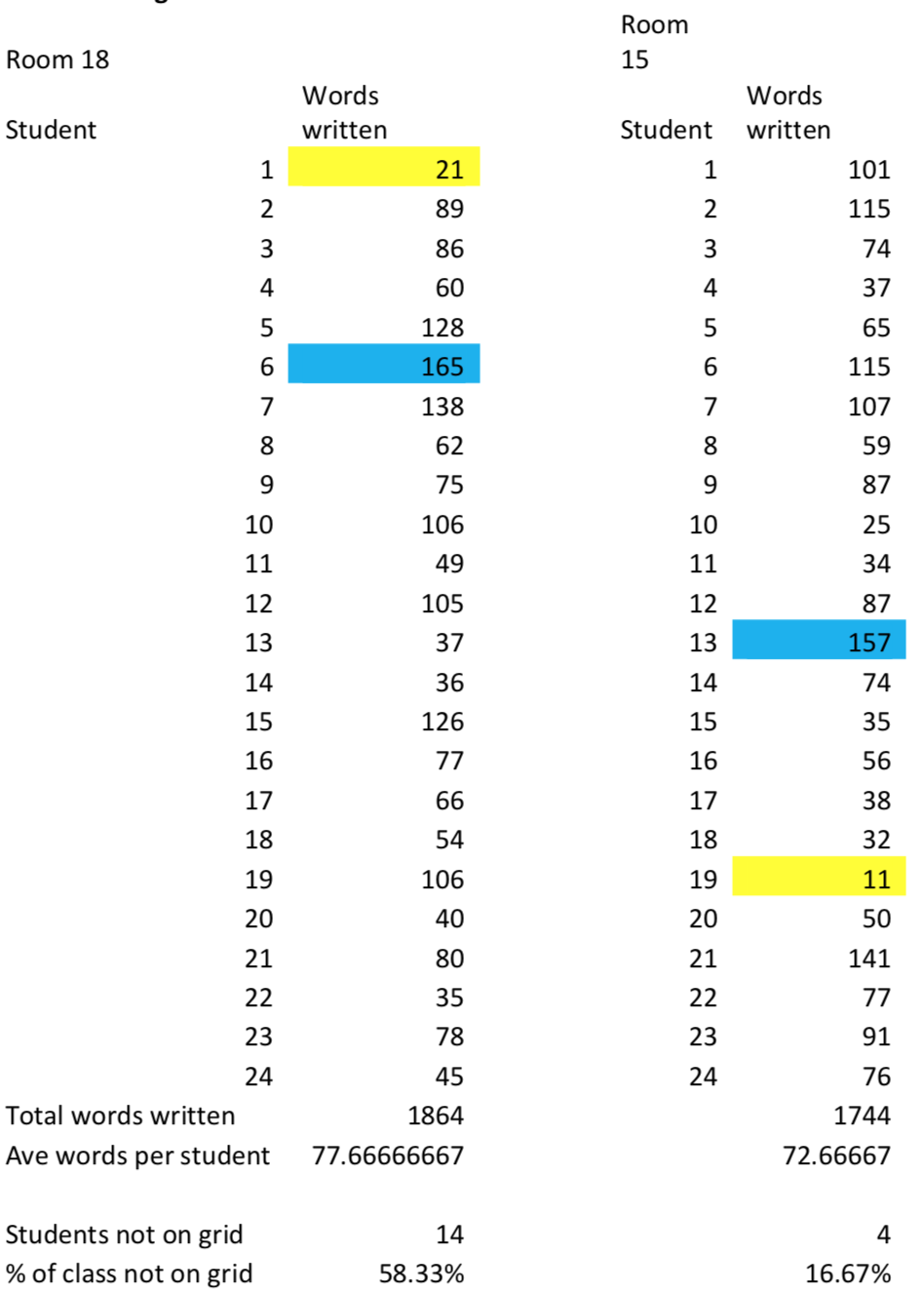Research report on Stylefit pilot – Western Heights School 2018
Download a PDF version here.

10 November 2018
Research report on pilot of StylefitTM at Western Heights School, Room 15, West Auckland 2018
Executive summary
In 2018 The Story Mint (TSM) in partnership with Western Heights School, Room 15, piloted using the world first, innovative technology StylefitTM with the learners to measure the impact the technology had on enthusing, improving and developing a deeper understanding of writing skills.
The learners, after needing a bit of help to get started, quickly became engaged and enthusiastic about writing. The boys surprised the researchers by how quickly they moved from being restless and not interested, to competitive and wanting writing sessions. This occurred within two one hour sessions.
After a year the designers of the pilot decided to test whether or not the writing skills in Room 15 had improved as expected when tested against a class at an equivalent level that had not had the use of StylefitTM. The control class, with no experience of StylefitTM, was asked to write stories to the same script as Room 15 at the same time. When the two groups work was compared it was found that Room 15’s writing skills were significantly better than those of the learners in the control class when measure against the StylefitTM grid.
The evidence is strong that StylefitTM dramatically improves writing ability.
Introduction
Room 15’s teacher, Aaron McGreal, aware of Suraya Dewing’s The Story Mint, and in particular her unique writing tool StylefitTM asked for funding and permission to use this product in his class in 2018. Both funding and pilot were approved by the Principal.
During school term, once a month Dewing and Howat, went to Room 15 on a Friday for an hour and gave the learners writing exercises to do using StylefitTM.
StylefitTM was originally developed to help adult creative writers to assess their writing style. They are guided to find their own solutions to challenges that occur in their writing. StylefitTM benchmarks writing against proven bestselling, award winning authors, and the classics. Once the work is submitted it is compared to these known works to see if it falls “on the grid”. Work that falls on the grid is known to have a good balance of nouns, adjectives, verbs and adverbs. The tool, originally designed to help creative writers get their work to a publishable level, is useful for helping learners to analyse and observe how different words affect sentences and how words affect writing style. The goal is to achieve a quality writing style that will engage and interest readers. The belief is, if they develop “good writing habits” at an early age, those habits continue throughout life. The technology
Research Report
Rm 18 Western Heights School © 1 Private and Confidential
also removes bias from teachers around learners they like more than others, a natural phenomenon. (Vogel, 2009)
The algorithm behind the StylefitTM was based on research supplied by Suraya Dewing to Professor Graeme Wake of Mathematics and Information Management Systems at Massey University. Tony Murrow, contractor to Sparks Interactive put together the complex algorithm that sits behind StylefitTM. There is no equivalent tool in the world.
The purpose of the pilot was to determine whether StylefitTM was potentially a useful tool to assist teachers to improve the quality of writing produced by learners. It is not, and must not, be seen as a replacement for highly trained, skilled teachers. It does, however also encourage self-directed learning.
Why is getting on the grid so important?
When Dewing developed StylefitTM she analysed over 400 pieces of writing across all genres to see if there was a pattern behind what she termed ‘successful’ writing and ‘unsuccessful’ writing. She found there was a significant pattern which predetermined how readable a piece of writing would be. She also found that there were writing patterns that determined style. This enables a writer to produce writing that matches the occasion for which it is being written – academic writing for example lands in a different place to lighter, more entertaining writing. The same goes for travel writing and for science fiction.
Her company runs writing exercises to prepare writers for publication and they all use StylefitTM as their guide. She says that if a piece of writing lands outside the grid it’s a strong indicator that it needs revision.
This was the guiding principle behind the Western Heights School experiment.
Key observations
-
Boys became engaged with the tool and their writing almost immediately
-
Once they had worked out how to get their writing on the grid they began experimenting with
words to see if they could shift their writing to other parts of the grid
-
Both genders quickly learnt what nouns, verbs, adjectives and adverbs did and understood how they worked in writing saying things like: ‘I need more adjectives”, “I need more verbs”
and so on after looking at the colour coding of their transcript
-
Learners formed collaborative groups where they worked together to assist one another to
get their writing onto the grid
-
All became engaged with the task. At one point there was 40 minutes silence while the
learners worked on their writing
-
Confidence in their ability to write, especially in boys, grew significantly
-
Self-directed learning became normal
Research Report,
Rm 18 Western Heights School © 2 Private and Confidential
The Technology (earlier Stylefit version shown)
https://www.thestorymint.com/the-story-refinery
Writers paste their writing into the Submit box below and click submit.
Submit box
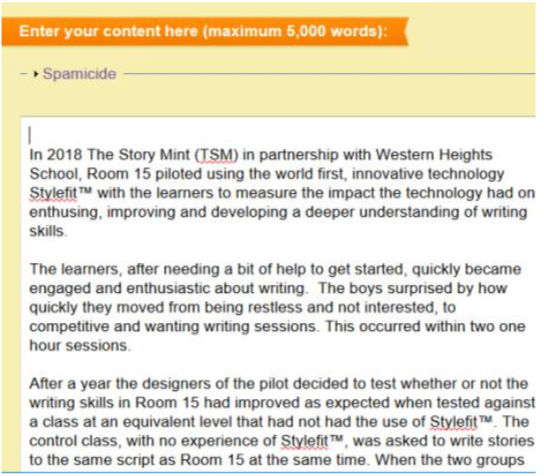
Result on Stylefit Grid
Within seconds they get placed on the grid.
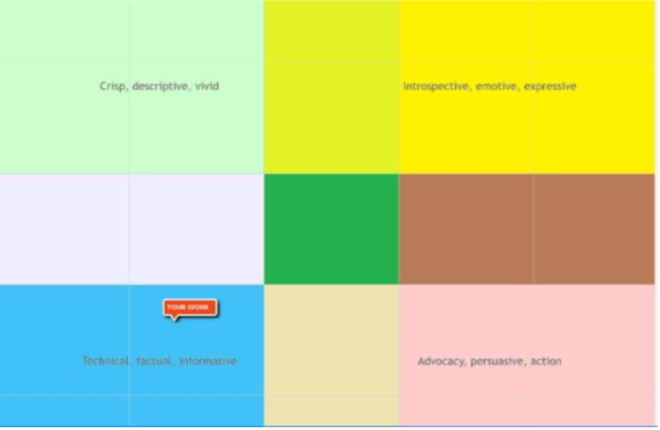
Colour coded feedback
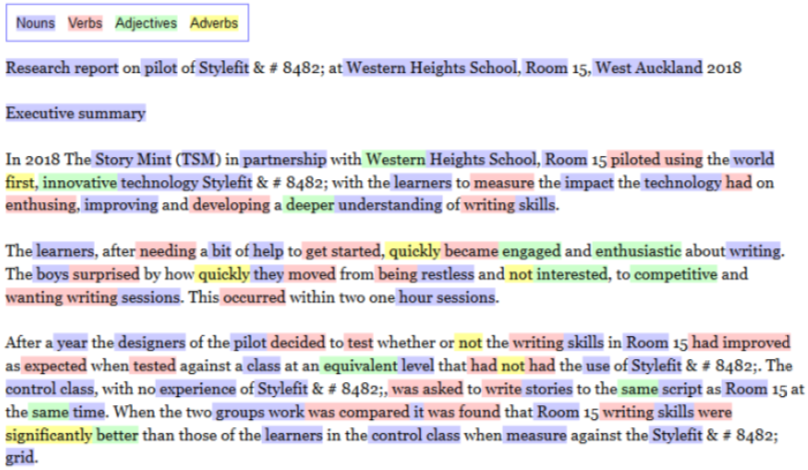
Methodology
During 2018 Dewing and Howat attended seven, one hour sessions, with the learners of Room 15. The learners were in Year 3 (8-9 year olds). In the first session(s) they trained the learners how to access the StylefitTM. Each learner had a unique ID and password.
The class was set a writing task to complete and then submitted his or her work through StylefitTM. Initially there was no success at landing on the grid. However, Dewing and Howat observed that even when they had to work at getting their writing on to the grid by experimenting with sentence structure, length and alternative words the learners persisted. As they did this they were discovering how nouns, adjectives, verbs and adverbs worked. They were given some help but were mainly encouraged to find their own solutions to their writing challenges. Some learners’ work landed on the grid in the first session and this inspired the other learners to keep working on their own work. Many of the learners who had mastered it helped other learners so that a collaborative environment naturally occurred.
The class developed a culture of applauding each writer as his or her work landed on the grid. This encouraged learners to keep working at their own writing.
Each learner had the use of a school lap top with internet access. This enabled them to access The Story Mint www.thestorymint.com, the web-site on which StylefitTM sits. After each writing session the learners emailed that day’s writing to Howat. Howat/Dewing then provided feedback on individual learner’s work which was sent to McGreal. He was then able to monitor progress and give the learners feedback.
Various writing prompts were used to get the learners started on their stories. At first, they were asked to write on what they liked about their school. Eventually, Howat developed the technique of providing images, such as young people swimming, school sports days, kayaking and so on. The learners, prompted by these pictures, wrote the story they imagined the picture to be telling. They were encouraged to use description, action and the technique of painting a picture.
The Final Lesson in the Trial
Learners in both Rooms 15 & 18, were given identical scenarios with instructions to use their imaginations to write the story prompted by the images. Both groups were allocated the same amount of time to write their stories. The Room 15 learners, worked on their laptops as they had all year. The learners in Room 18 used pencil/pen and paper.
The learners in Room 18 were at an equivalent developmental stage and had not been exposed to StylefitTM. Howat then typed the stories into a Word Document and put each story through StylefitTM in order to determine how the stories from each class compared.
The writing was analysed for its placement on the grid and for word length (Appendix 1, 2 & 3).
The Story in Pictures
Start of the Year
At the start of the year this was how the students behaved. Some worked but most were distracted and not engaged.


Mid-year (July)
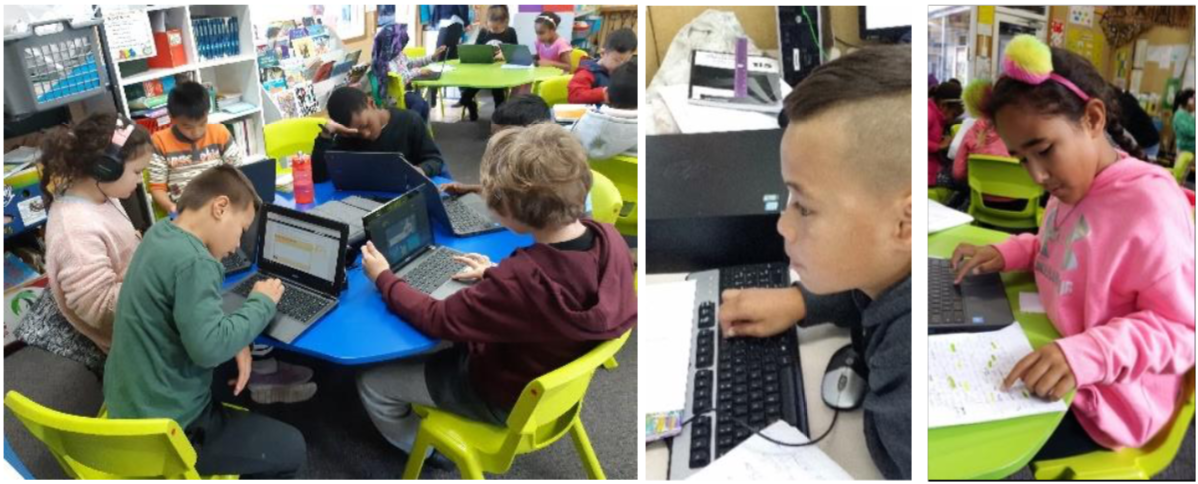
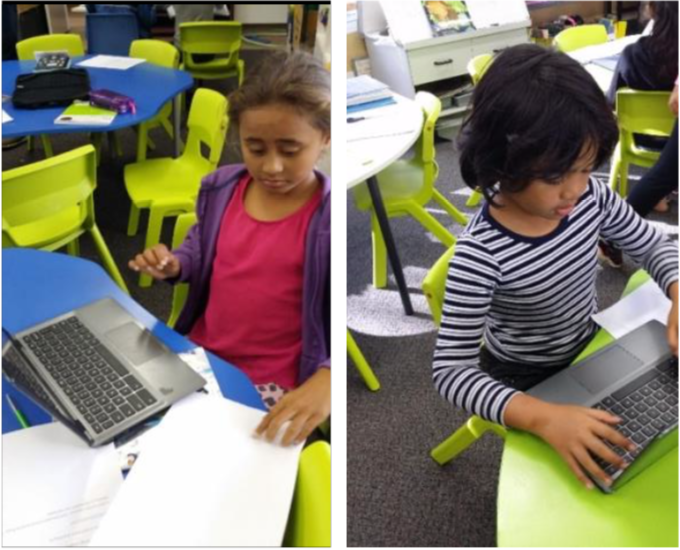
End of the Year


Some Portraits
Jillane
When Suraya first met Jillane Walsh (left in the blue sweat-shirt) she was sitting in a corner in front of a computer. After logging her in to StylefitTM Suraya sat with her to help her write a story. Jillane burst into tears.
At the last session, when the learners were on the mat, Suraya asked, “what kinds of words do we find in writing?” Her hand shot up. She said, “Nouns and verbs…” Two other girls interrupted but Suraya insisted she keep going. “Adjectives and adverbs,” she finished.
She is sitting at the table of the boys at work in the mid-July photo.
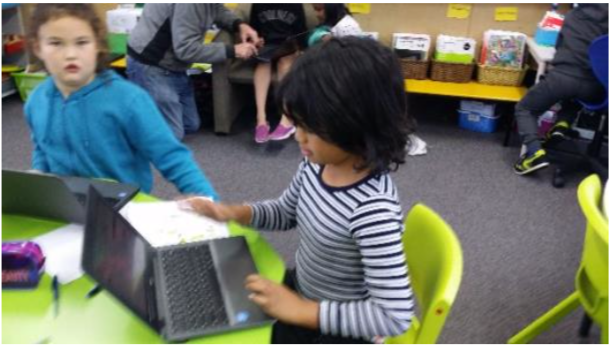
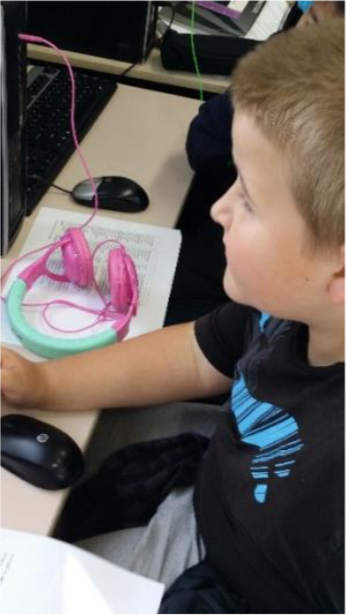
Arlin
Arlin played video games and messed about for three sessions. When he emailed Bruce with his work the file was empty. Then one day his work started arriving after he had written something that had landed on the grid. He settled to his work and joined the group of boys in the middle of the room.
From then on his work kept coming until his stories exceeded the length of other learners. At the last session he finished his story first. When he was asked if he wanted to keep writing he said he did. Suraya assumed he was making his story longer. In fact he was writing a second story. Both landed on the grid.
Collaborating
One of the first things we noticed about the class was how quickly they started helping each other from logging on to writing their stories and emailing them.
Your content goes here. Edit or remove this text inline or in the module Content settings. You can also style every aspect of this content in the module Design settings and even apply custom CSS to this text in the module Advanced settings.
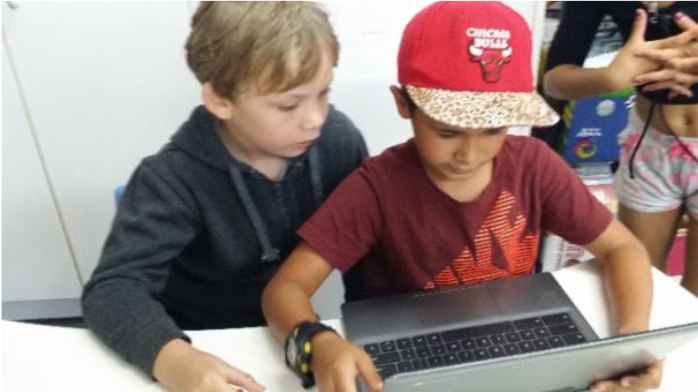
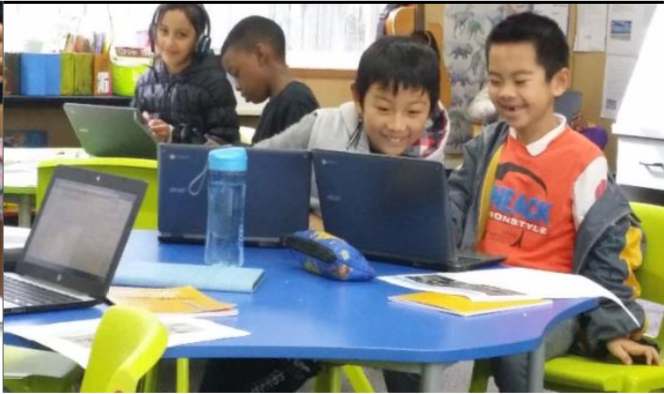
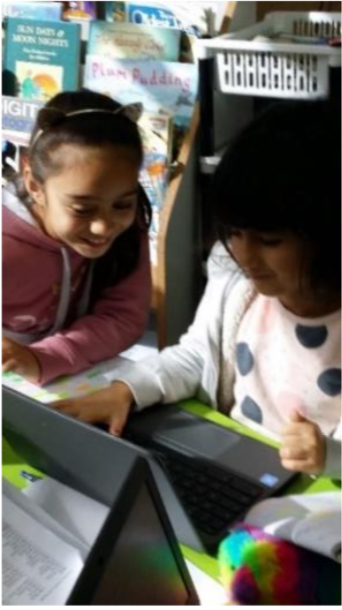
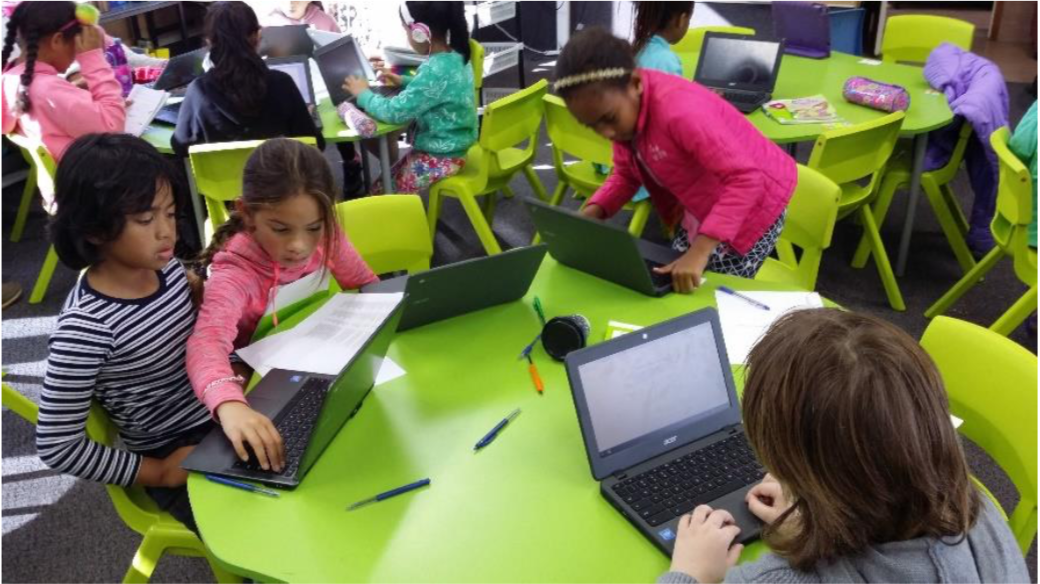
Summary
Twenty four learners in Room 15 and twenty four in Room 18 wrote stories. Analysis showed that:
-
83% of Room 15 (Aaron McGreal’s class) learners’ writing landed on the grid
-
42% of Room 18 (control class) learners’ writing landed on the grid
-
There was no significant difference in the length of stories written by either class
-
At the start of 2018 no boys in Room 15 landed on the grid
-
At the end of 2018 100% of boys in Room 15 landed on the grid
-
Two learners in Room 18 had already encountered StylefitTM the year before and remembered
that session. Although one of these boys stated StylefitTM made him love writing the story he
wrote for this exercise did not land on the grid.
-
Two learners from Room 15 landed in the middle dark green section of the grid. This
demonstrates a balance of writing. Adult writers are encouraged to land in this area, and many
struggle until they fully understand the principles of good writing.
-
No learners from Room 18 landed in the middle dark green of the grid. This is not a criticism, just an observation.
Discussion
Writers whose writing lands on StylefitTM’s grid, find their writing is more readable, and achieve greater reader engagement. Many adults take many years to get their writing to land consistently on the dark green, inner square. Yet two of the learners from McGreal class accomplished this.
An accomplished author, Dewing put her last novel “Bend with the Wind” through Stylefit, and after making changes so that her work landed on the grid she was approached by a publisher who had seen her work on The Story Mint website. Work that does not land on the grid, gives the appearances of being readable, but is often described as dull and flat. When re-worked so that the writing lands on the grid, readers remark on how much easier the writing is to read. Even writers notice and comment on the improvement.
The StylefitTM tool does not take away the creativity of the writer, nor does it do their work for them; it simply benchmarks it against proven writing. It is then up to the writer to improve the writing if the writer desires. Many who use StylefitTM professionally claim it challenges them to analyse their writing. While it encourages self-directed learning it is not an alternative to a teacher but rather an additional teaching aid.
The different results from the two classes overwhelmingly states that those who used the StylefitTM, dramatically improved their writing during the year. The other phenomena that was unexpected, is the impact on male learners.

1st Session of 2018

Last session of 2018
There is a photographic record of every session and by the third session the boys who were scattered around the room had formed a group in the middle of the classroom where they worked steadily.
Appendix One
Room 15 Class, Western Heights School
Alicia Cowan
At home me and my sisters watched a minion movie and they were painting their house.
When they were painting the house the older one painted on the other one and the older one laughed out loud and the other one got so angry and they started to have a fight. Then it was one hour later…when they were fighting with the paint they were painting the whole house and they were painted in yellow paint. After they stopped fighting the minions looked at them self’s and they were surprised.so they washed there self’s and then they did the other work.
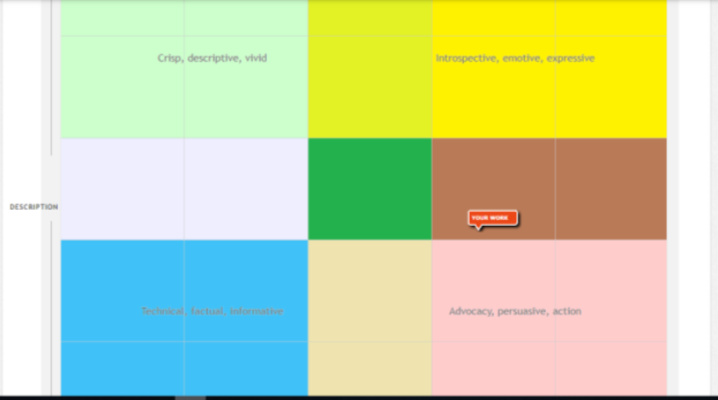
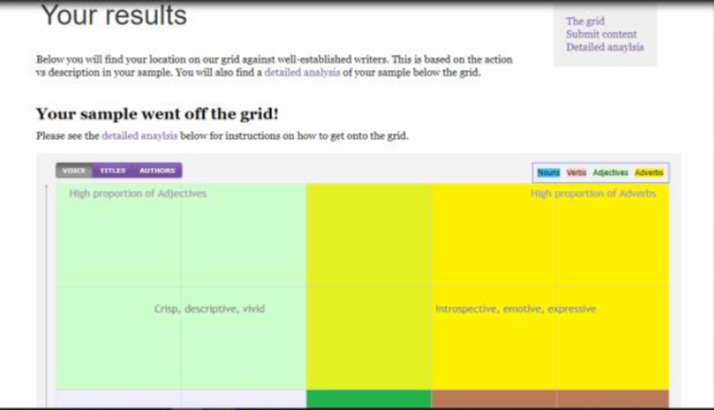
Jumana Adamji
BOOM BANG BANG! Silver`s mum was in the vegetable garden fixing the old brown rusty shed. Silver was in her room playing with her cute white fluffy puppy when the dog hit a big pile of picture books down there. On the pink and purple wall there was a bright yellow button.Silver was confused on one hand her mind was telling her not to press it well on the other hand her mind not to press it .she took a long deep breath and thought about if her mum would get extremely angry with her. As her shaking hand went towards the bright yellow button and pressed it. A door opened widely through the wall.
See more students’ work in Appendix 1 in our PDF copy of this report.
Appendix 2
Western Heights School
